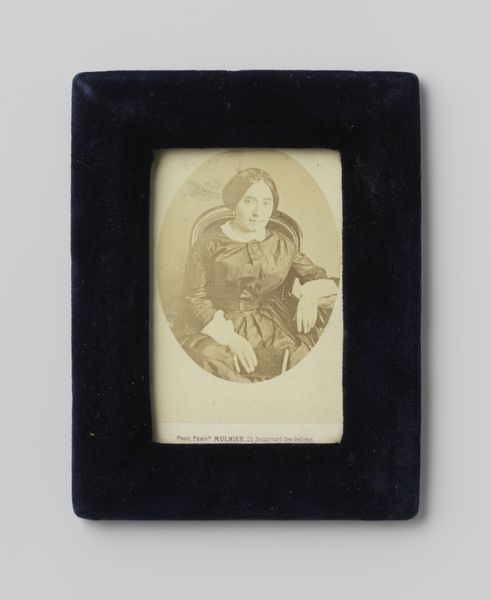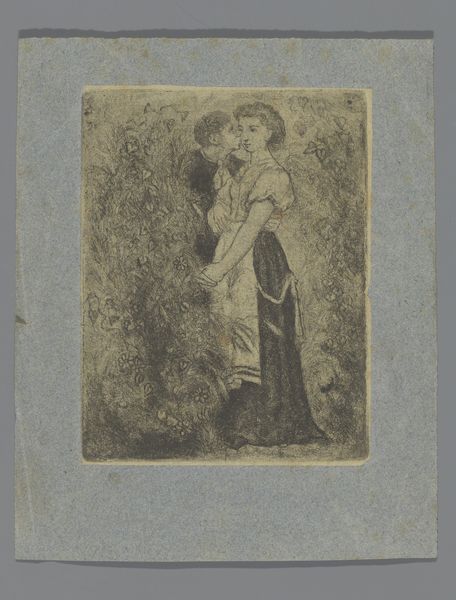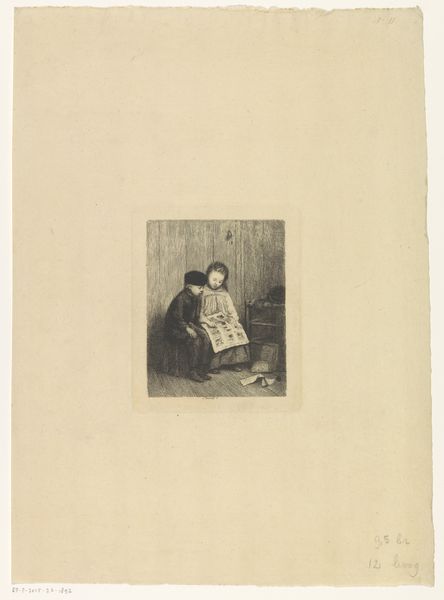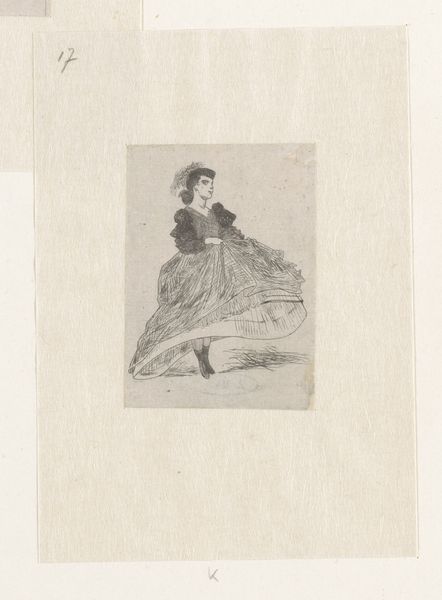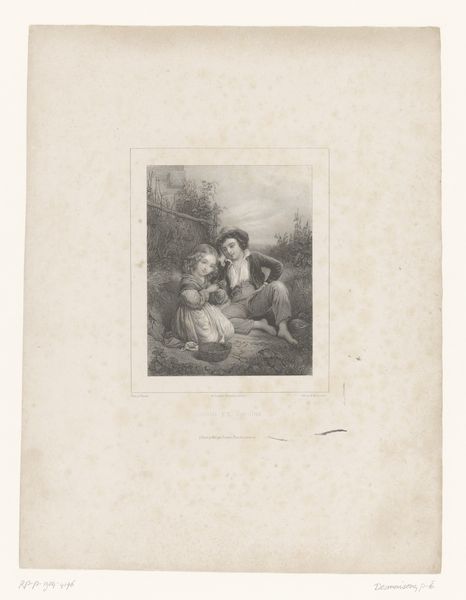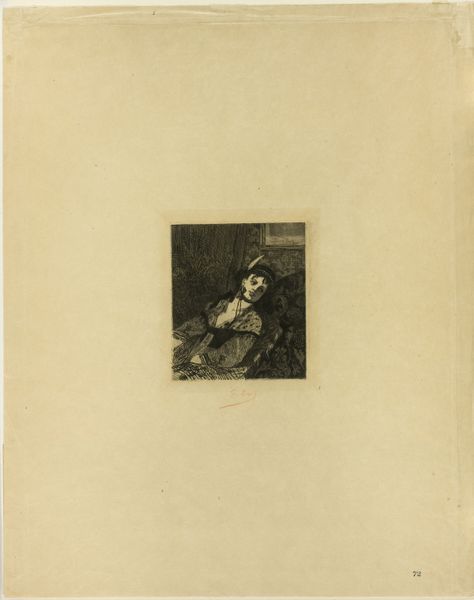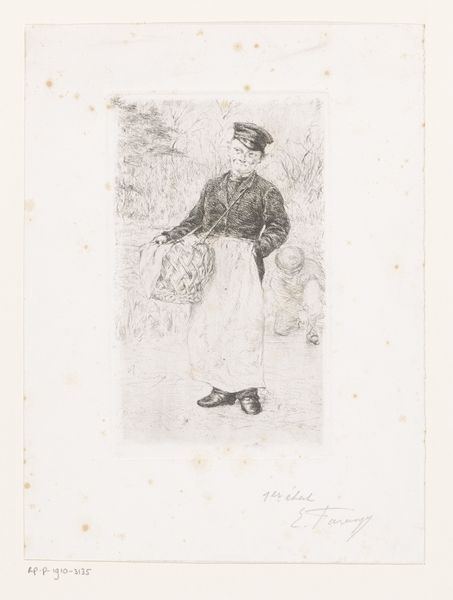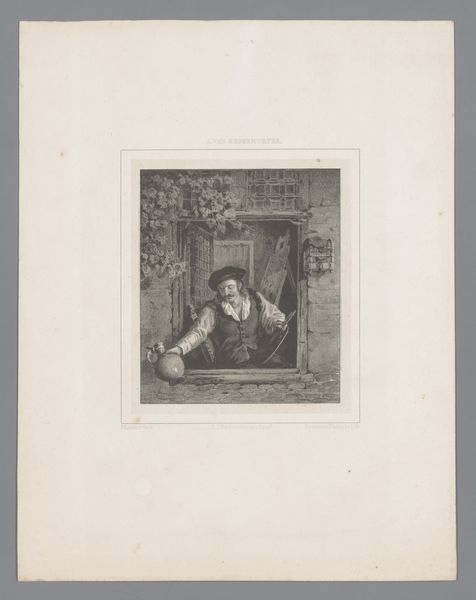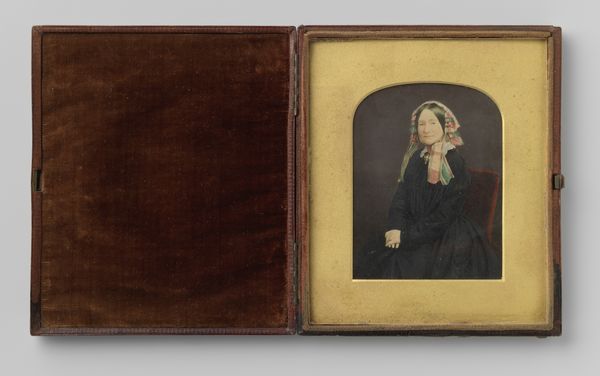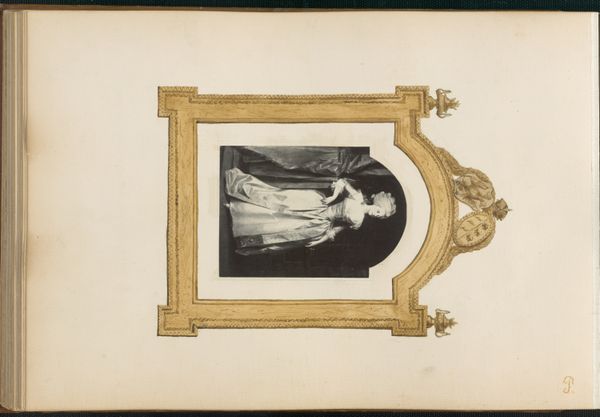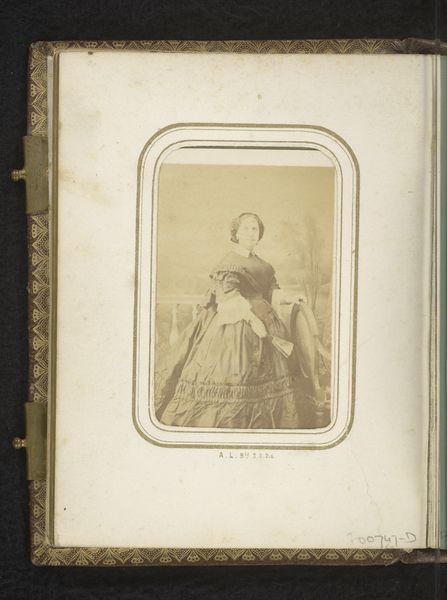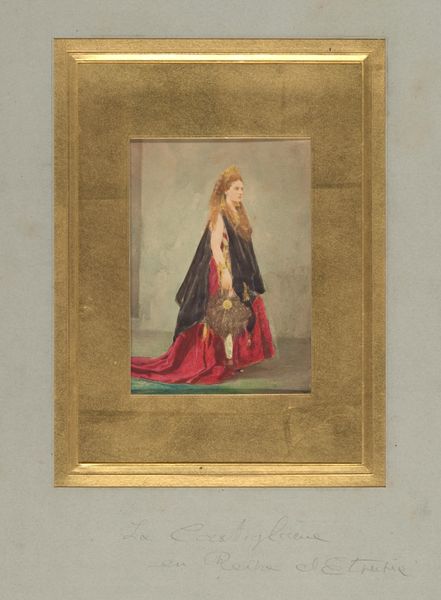![[Marie de Morny] by Pierre-Louis Pierson](/_next/image?url=https%3A%2F%2Fd2w8kbdekdi1gv.cloudfront.net%2FeyJidWNrZXQiOiAiYXJ0ZXJhLWltYWdlcy1idWNrZXQiLCAia2V5IjogImFydHdvcmtzLzgzN2EzN2UyLTUxOGItNDQ3MC1hNTEwLWUzNWE3YzJkYjY0Zi84MzdhMzdlMi01MThiLTQ0NzAtYTUxMC1lMzVhN2MyZGI2NGZfZnVsbC5qcGciLCAiZWRpdHMiOiB7InJlc2l6ZSI6IHsid2lkdGgiOiAxOTIwLCAiaGVpZ2h0IjogMTkyMCwgImZpdCI6ICJpbnNpZGUifX19&w=3840&q=75)
Dimensions: Window: 7 1/2 × 5 1/2 in. (19 × 14 cm) Image: 4 in. × 2 13/16 in. (10.2 × 7.2 cm)
Copyright: Public Domain
Curator: Ah, yes. Here we have a painting, it's actually called '[Marie de Morny]', believed to have been painted sometime between 1855 and 1865. The artist, Pierre-Louis Pierson, captured Marie in what appears to be an intimate setting using oil on canvas. It resides here at the Metropolitan Museum. Editor: My initial impression? An air of contained elegance, almost bordering on melancholy. The colors are muted, which gives the whole scene a very soft, reflective quality. It's like a faded memory, both precious and untouchable. Curator: That's interesting. The piece strikes me as intentionally evocative of Romantic sensibilities—the pose, the dress, even the subdued palette. Yet there's also a keen eye for detail that suggests the burgeoning Realist movement of the time. Note how Pierson carefully renders the textures of her clothing. Editor: The plaid patterns are definitely something that immediately grabs you. But, even with this somewhat photographic dedication to details in the attire, you can also feel it almost fade around the figure with the blending into the background. Almost like a slow merging with the internal world. Is that Marie herself lost in her thoughts, or is it simply a well-executed representation? It certainly gives food for thought. Curator: Perhaps both, given the subject. Marie de Morny herself was a fascinating character—a socialite, writer, and prominent figure in Parisian society. In iconography, the seated pose often suggests contemplation, inner reflection. I would say Pierson does a fine job portraying not just Marie’s physical likeness, but also hinting at the interiority. The slight downward gaze and her gesture certainly suggest it, also. Editor: Definitely, it does lend an air of vulnerability, doesn't it? I find myself wondering about her thoughts, her secrets... what did society ask her to leave unseen to present this outer facade. A visual enigma, that invites you to wander in speculations. Curator: Well put. Looking at this image again after our talk, it highlights, yet again, the fascinating tensions between outer appearance and inner life that defines so much of portraiture. It leaves much unsaid, so that you end up doing much of the work with filling out the story yourself. Editor: Exactly. It’s not just seeing a person, it's about sensing a presence, and in its way, maybe our presence creates some kind of new life within the image that lasts forever, right here and now. A moment caught between our perceptions and Pierson’s hand.
Comments
No comments
Be the first to comment and join the conversation on the ultimate creative platform.
